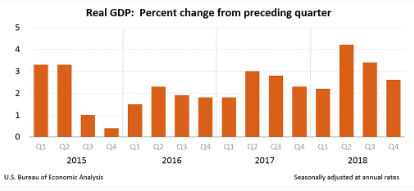Secure Act 2.0: Tax Planning Tips
Tax planning for your retirement savings is also important. To help with that, you can typically choose between two account types as you save for retirement: Traditional IRA or employer-sponsored plans, or Roth versions of the same.
All Things Roth
Either way, your retirement savings grow tax-free while they’re in your accounts. The main difference is whether you pay income taxes at the beginning or end of the process. For Roth accounts, you typically pay taxes up front, funding the account with after-tax dollars. Traditional retirement accounts are typically funded with pre-tax dollars, and you pay taxes on withdrawals.
That’s the intent, anyway. To fill in a few missing links, the SECURE 2.0 Act:
- Eliminates Required Minimum Distributions for employer-sponsored Roth accounts, such as Roth 401(k)s and Roth 403(b)s, to align with individual Roth practices (2024)
- Establishes Roth versions of SEP and SIMPLE IRAs (2023)
- Lets employers make contributions to traditional and Roth retirement accounts (2023)
- Lets families potentially move 529 plan assets into a Roth IRA (2024 – as described above)
There’s one thing that’s not changed, although there’s been talk that it might: There are still no restrictions on “backdoor Roth conversions” and similar strategies some families have been using to boost their tax-efficient retirement resources.
Speaking of RMDs
Not surprisingly, the government would prefer you eventually start spending your tax-sheltered retirement savings, or at least pay taxes on the income. That’s why there are rules regarding when you must start taking Required Minimum Distributions (RMDs) out of your retirement accounts. That said, both SECURE Acts have relaxed and refined some of those RMD rules.
- Extended RMD Dates (2023): the original SECURE Act postponed when you must start taking taxable RMDs from your retirement account—from 70 ½ to 72. The SECURE 2.0 Act extends that deadline further. If you were born between 1951–1959, you can now wait until age 73. If you were born after that, it’s age 75.
- Reduced Penalties (2023): If you fail to take an RMD, the penalty is reduced from a whopping 50% of the distribution to a slightly more palatable 25%. Also, the penalty may be further reduced to 10% if you fix the error within a prescribed correction window.
- Aligned RMD Rules for Personal and Employer-based Roth Accounts (2024): As mentioned above, RMDs have been eliminated from employer-based Roth accounts. If you’ve already been taking them, you should be able to stop doing so in 2024.
- Enhanced RMDs for Surviving Spouses (2024): If you are a widow or widower inheriting your spouse’s retirement plan assets, you will be able to elect to determine your RMD date as if you were your spouse. This provision can work well if your spouse was younger than you. As described here: “RMDs for the [older] surviving spouse would be delayed until the deceased spouse would have reached the age at which RMDs begin.”
An Addendum For Charitable Donors
One good thing hasn’t changed with SECURE 2.0: Even though RMD dates have been extended as described, you can still make Qualified Charitable Distributions (QCDs) out of your retirement accounts beginning at age 70 ½, and the income is still excluded from your taxable adjusted gross income, as well as from Social Security tax and Medicare surcharge calculations. Plus, beginning in 2024, the maximum QCD you can make (currently $100,000) will increase with inflation. Also, with quite a few caveats, you will have a one-time opportunity to use a QCD to fund certain charitable trusts or annuities.
Next Steps
How else can we help you incorporate SECURE 2.0 Act updates into your personal financial plans? The landscape is filled with rabbit holes down which we did not venture, with caveats and conditions to be explored. And there are a few provisions we didn’t touch on here. As such, before you proceed, we hope you’ll consult with us or others (such as your accountant or estate planning attorney) to discuss the details specific to you.
Come what may in the years ahead, we look forward to serving as your guide through the ever-evolving field of retirement planning. Please don’t hesitate to reach out to us today with your questions and comments.

Justin D. Rucci, CFP®
Wealth Advisor, Warren Street Wealth Advisors
Investment Advisor Representative, Warren Street Wealth Advisors, LLC., a Registered Investment Advisor
The information presented here represents opinions and is not meant as personal or actionable advice to any individual, corporation, or other entity. Any investments discussed carry unique risks and should be carefully considered and reviewed by you and your financial professional. Nothing in this document is a solicitation to buy or sell any securities, or an attempt to furnish personal investment advice. Warren Street Wealth Advisors may own securities referenced in this document. Due to the static nature of content, securities held may change over time and current trades may be contrary to outdated publications. Form ADV available upon request 714-876-6200.
Reference Materials and Additional Reading:
- Congress.gov, H.R.2617 – Consolidated Appropriations Act, 2023 (containing Division T – Secure 2.0 Act of 2022), December 29, 2022.
- Kitces.com, “SECURE Act 2.0: Later RMDs, 529-to-Roth Rollovers, And Other Tax Planning Opportunities,” Jeffrey Levine, December 28, 2022.
- The National Law Review, “SECURE 2.0 Act of 2022 Arrives: (Another) Landmark Retirement Package,” December 23, 2022.
- U.S. House Ways & Means Committee, “The Securing a Strong Retirement Act of 2021.”
- ASPPA, “It’s Official: SECURE 2.0 Enacted into Law,” Ted Godbout, December 30, 2022.


















